Glimpsed from the tree-lined road in the sleepy provincial town of Villelaure, France, one might take the handsome honey-colored stone country castle atop a hill for a plush private residence, but once inside, everything from the minimalist eye-popping rainbow-colored walls and sleek concrete floors tells a different story. Masterminded by French interior and industrial designer Matali Crasset, the newly opened on a rehabilitated ancient farm in the Lubéron Valley surrounded by vines, olive groves, and a 22-acre (nine-hectare) forest, is both an ultra-contemporary eco-friendly retreat and a forward-thinking hub of hospitality. Crasset’s fourth collaboration with hotelier partners Philip Chapelet and Patrick El Ouarghi (Dar-HI in Nefta, Tunisia, and former HI-Hotel in Nice, France and HI-Matique in Paris) is yet another venture into unexplored territory and “an ongoing work-in-progress for years to come.”
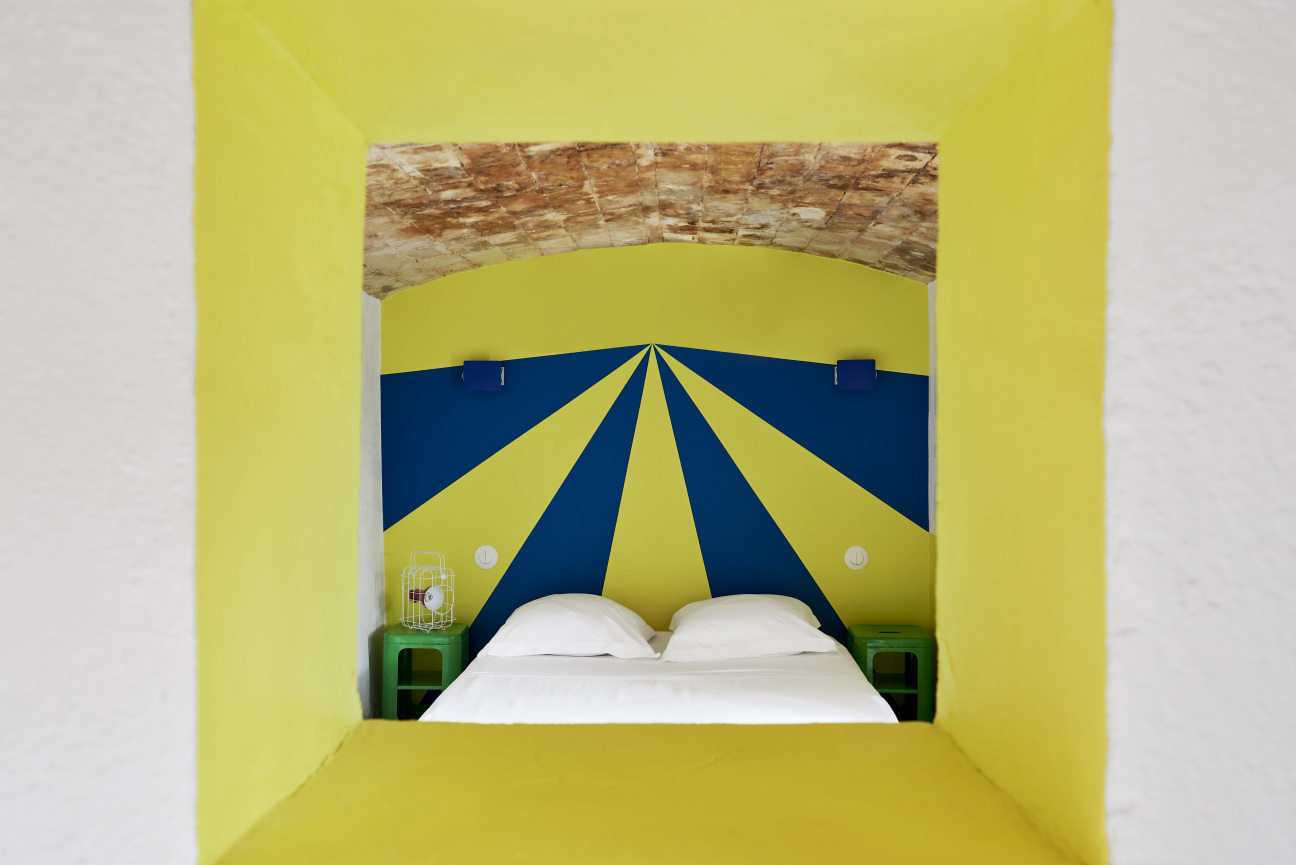
Known for her whimsical multi-functional modular furniture and home accessories, Crasset—who worked five years with Philippe Starck at Thomson Multimedia in Paris before opening her own studio in 1998—says she always tries to encourage people to use objects and spaces in an alternative way. At La Ferme Hi-BRIDE, everything from a Turkish-inspired tray or an iconic Nomade LED lamp edited by Ikea to low-slung polychromic chairs and dollhouse-like tables make up a sort of live-in museum of the designer’s oeuvre. The guest rooms—a medley of bold-hued wall paintings that play with perspectives, whitewashed wooden beams and sandblasted 15th-century vaulted stone arches—are also outfitted with her latest touches: hand-held metallic lamps that hook onto the bedside and exquisitely-scented “eternal sap” fragrance diffusers (“I wanted the smell of freshly-cut hay”), edited by Maison Berger Paris.
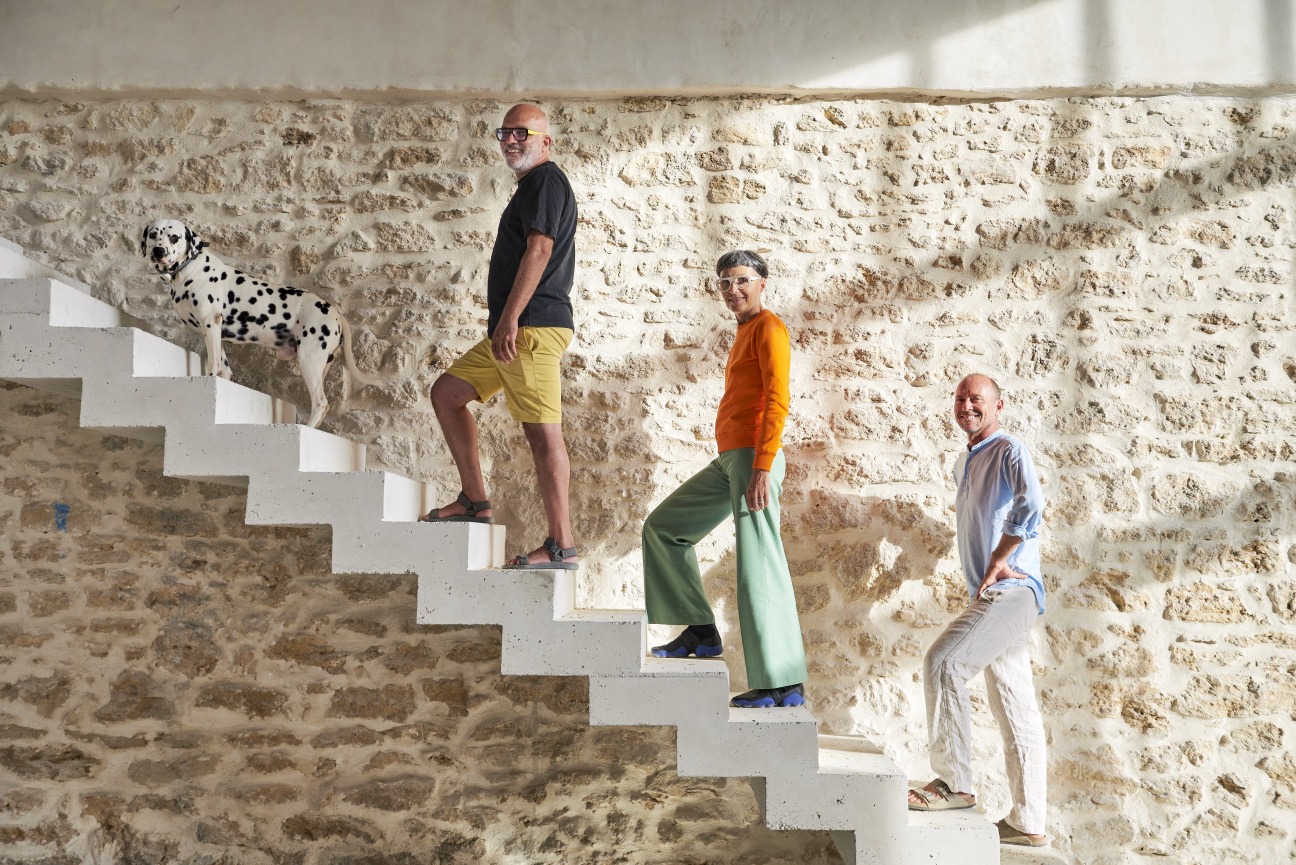
But the hotel is also a reflection of Crasset’s long-standing commitment to applying her design approach to developing community-minded projects that address global issues. “Particularly now, when it has become more urgent for people reconnect with nature, we wanted to put the same urban energy into the rural,” says the 57-year-old. “It brings a new dynamic angle to agrotourism.” At HI-Bride, that might range from working hand-in-hand with local artisans to joining the village wine cooperative for the distribution of its tri-color organic vintages, or even something as simple as stocking their neighbor’s delectable lavender honey for guests to slather on whole-grain baguettes at breakfast, served at a long table in the shiny steel kitchen.
“I was born in Châlons-en-Champagne, an intensely agricultural town with 90 inhabitants,” Crasset says with a smile. “I used to think I needed a city for my work and I crossed out everything that had to do with nature. It’s great to reinvest myself—like many people during COVID, I had the time to read, mostly books by philosophers and ecologists.”
After years of collaboration with Seb, Artémide, and a score of international companies, Crasset admits that her priorities are no longer in industrial design. “I don’t believe in innovating for innovation’s sake,” she explains. “I’m not making any more objects because I think there are already too many—unless it’s for a small firm and has something to do with natural heritage or an already established ecosystem.”
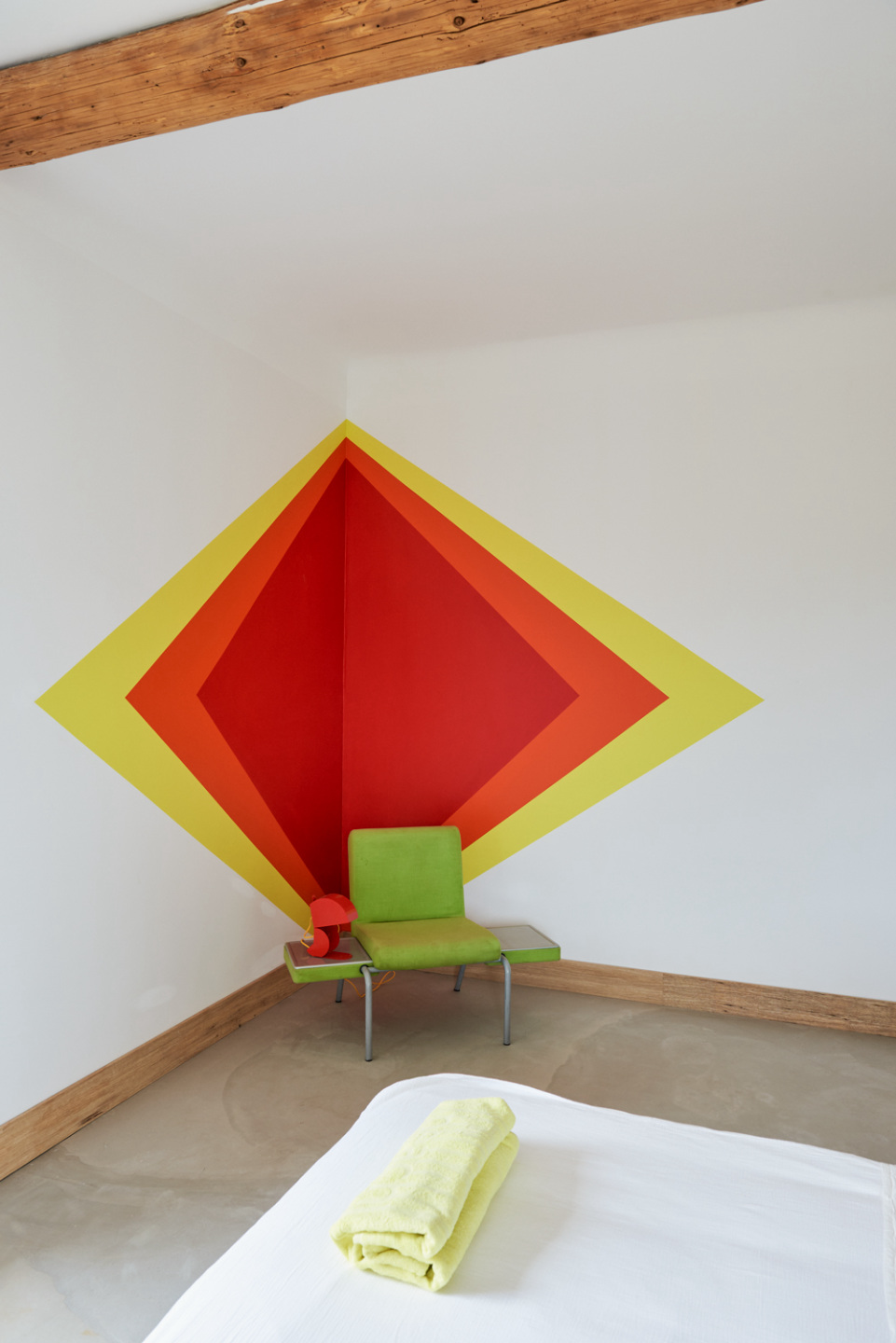
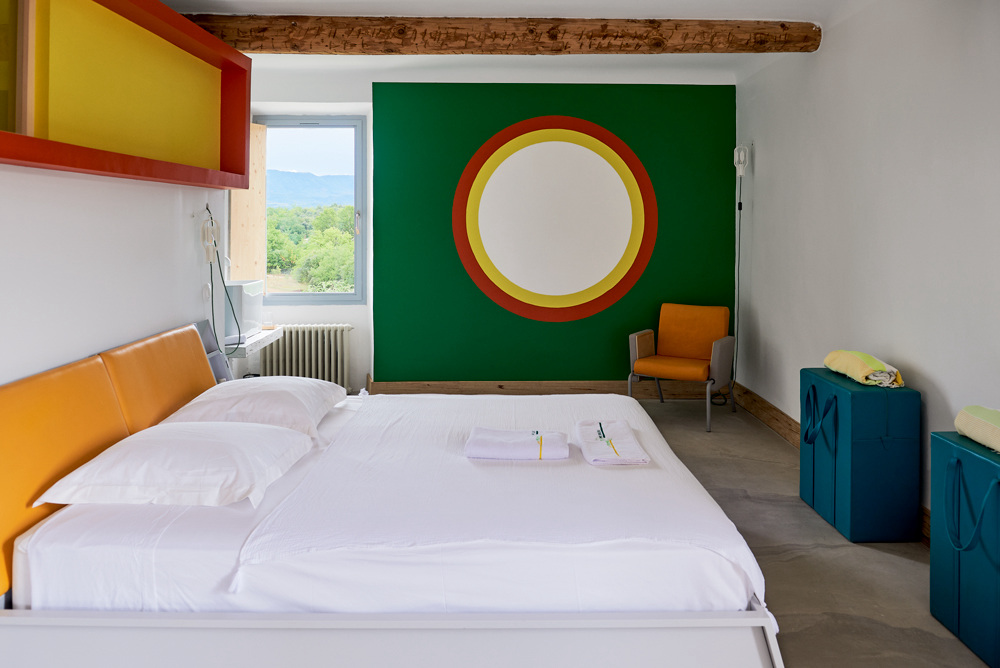

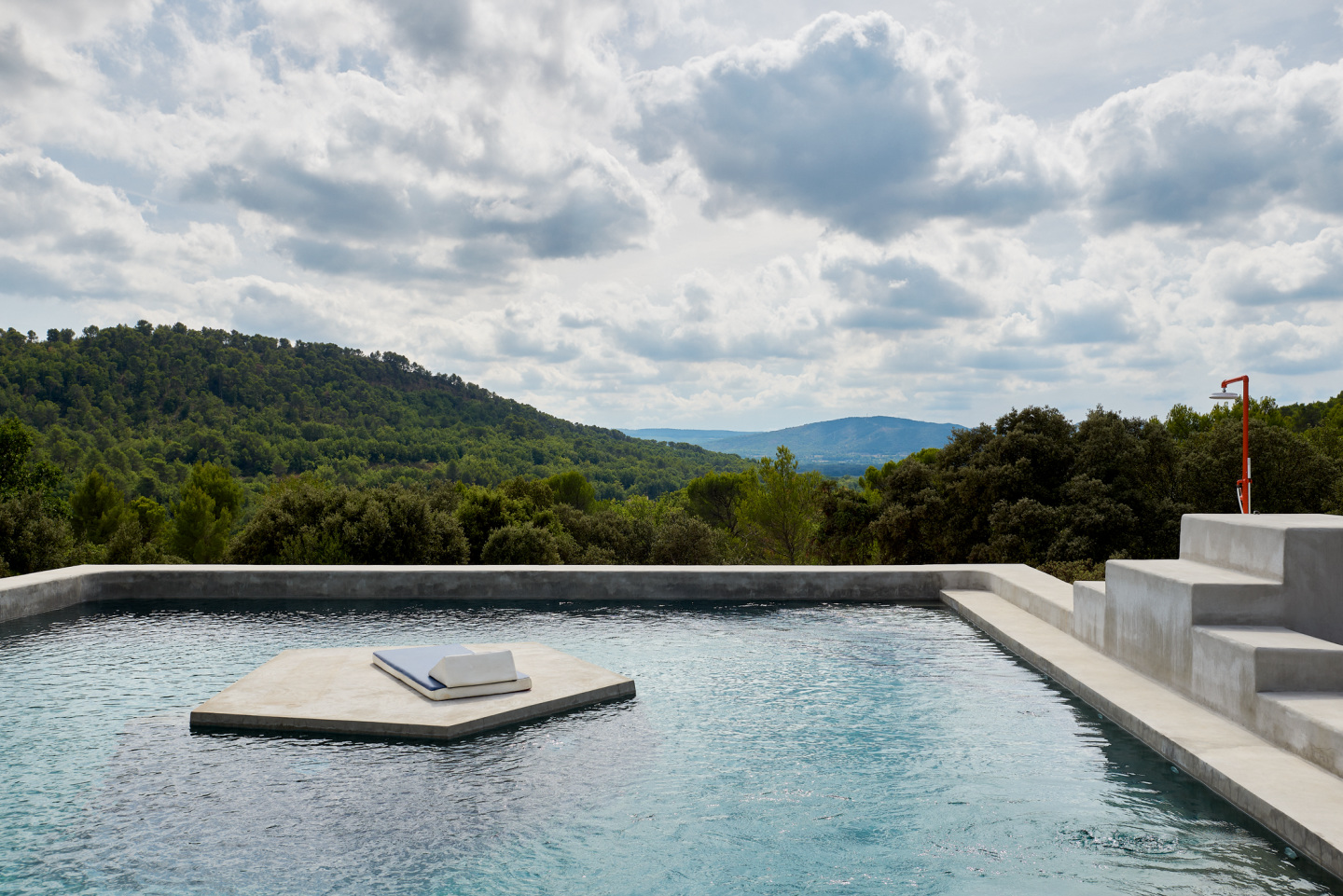
The retreat’s largest building, HI-go, is more representative of her current focus: the concept was to restore an existing farm structure with interiors that merge with the surrounding agrarian landscape. It features a ventilation system of pivoting doors; a floor mixed with river stones and wood shavings, and a tree-trunk staircase encased with forest green metal steps, leading to pink, orange, and violet sunset and sunrise bedrooms. “I’ve never liked hallways, they have no real function,” Crasset says, sweeping her hand across a large windowsill. “We made this into a spot for a desk, with a view of the olive trees.”
Though the hotel began taking reservations for this month, Crasset’s visions for the property will continue to be realized in phases: next door to the kitchen, where invited chefs are conducting master classes, a former hayloft is being renovated into a living room equipped with an uber-modern fireplace, floor-to-ceiling bookcases, and a jagged concrete staircase that leads to a mezzanine. Near the vineyards, the future cavernous restaurant HAM (Hangar à Manger) will feature organic terroir cuisine; plans are also in the making for cutting-edge musical events. Buried deep under the site’s medieval tower, there may even be Roman vestiges and secret tunnels.
But in the meantime, come sunset, everyone drifts to a table under a mulberry tree for an aperitif of homegrown bubbly rosé. “The logo says it all,” Crasset muses, showing me the bottle’s label. “It’s a combination of the tower and a tree with a forked branch. That’s what we’d like our guests to experience—a bifurcation from daily rituals where they can find their own path.”


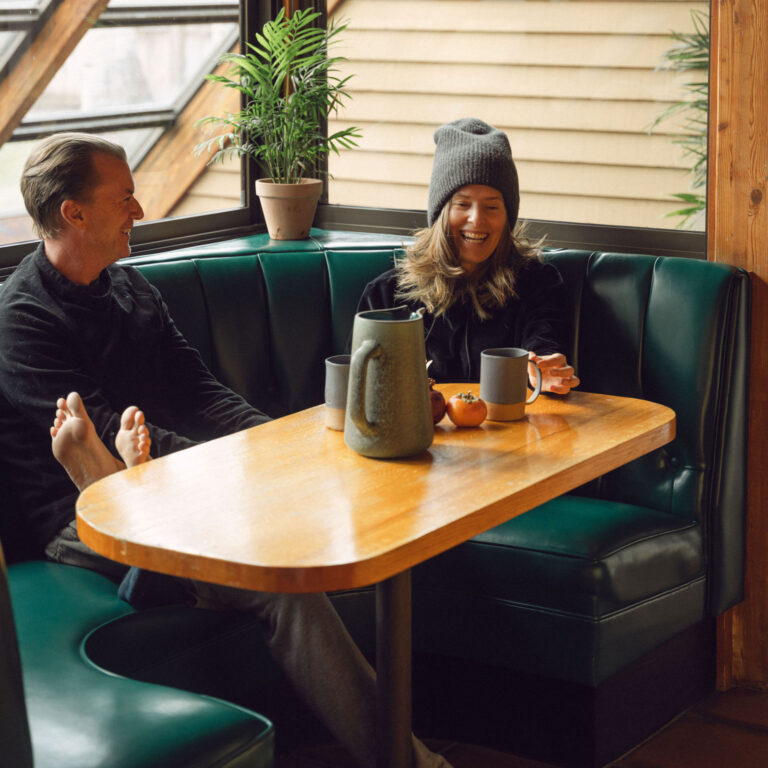


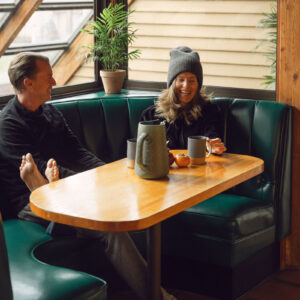




 in your life?
in your life?

